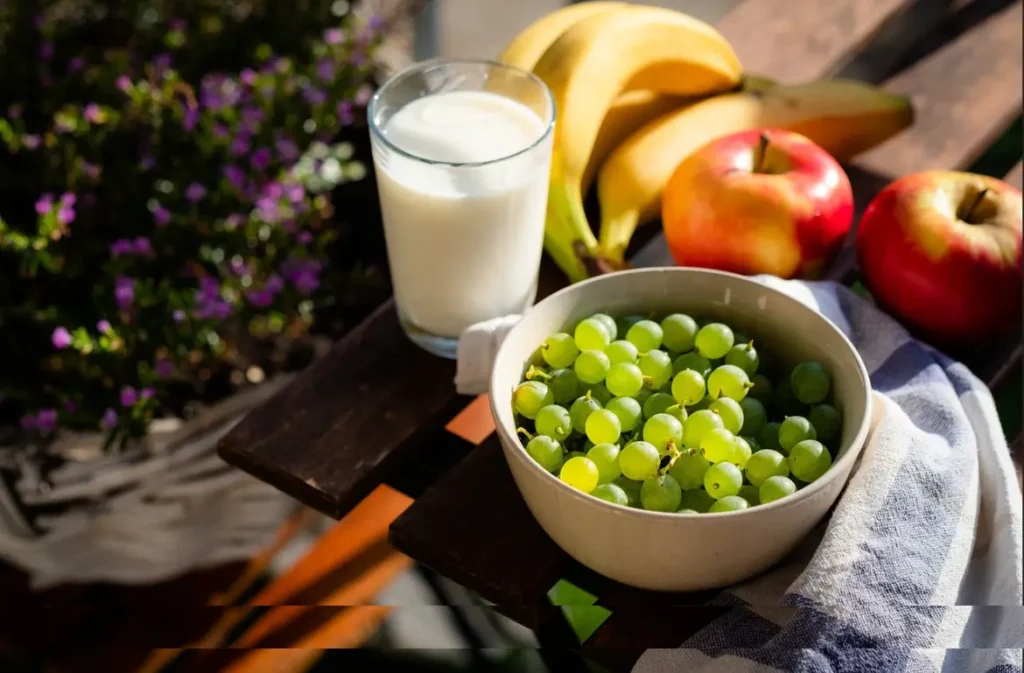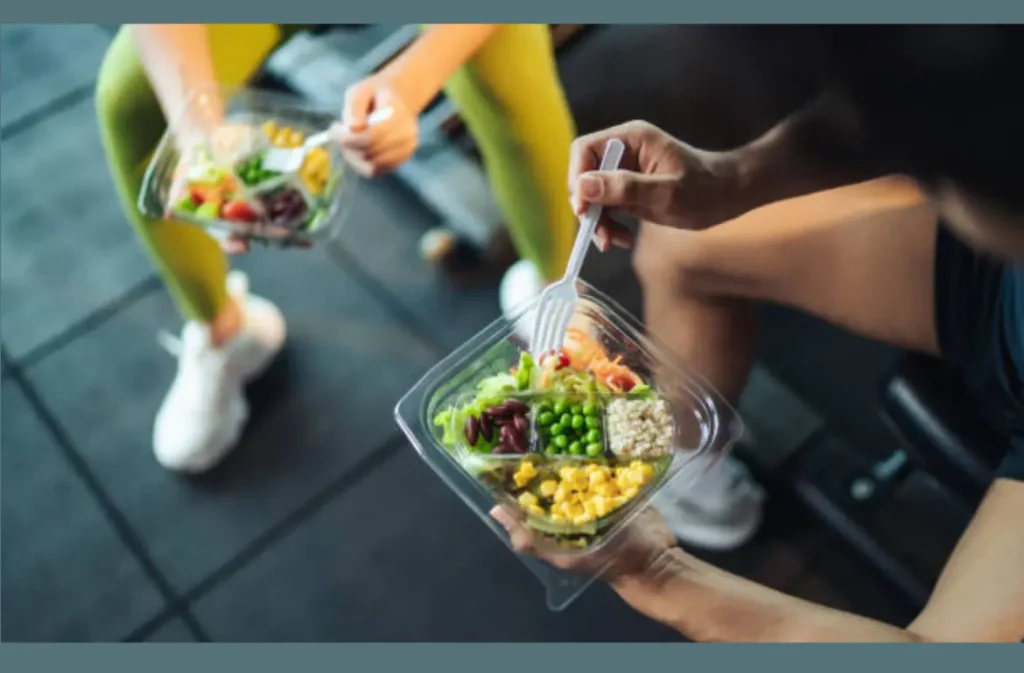The Best Diet and Training Plan for Fitness
The Best Diet and Training Plan for Fitness
Boost your fitness with this effective Diet and training plan. Achieve your goals with the right workout and food plan tailored for muscle gain or fat loss. Regularly following a workout and eating plan is a great way to get fit. But you might not be able to reach your goals if you don’t get good food advice. For tough workouts, you need the right power, which comes from the foods and drinks you eat and drink.

In a new study, Researchers looked at the daily calories of 90,000 people and found that about 57.9% of those calories came from highly processed and polished foods. You can find these “convenience foods” at your local grocery store: soups in a can, frozen meals in a box, side dishes in a box, drinks, Fresh milk, snack foods, and more.
Diet and Training Plan: How much should I eat?
You will need to start keeping track of your macronutrients and calories. It’s not necessary to be exact, but you should always do the same thing.
If you want to get stronger and build more muscle, you should eat 14 to 18 calories per pound of body weight. 10 to 12 calories per pound will help you lose fat. Yes, these are ranges, not exact numbers. You’ll have to try a few different things to see what diet and workout plans are best for you.
For fat loss, start on the higher end of the spectrum and the lower end for muscle gain. This way, you can make changes slowly, and if you aren’t losing or adding weight after two weeks, make changes.
When you’re trying to gain or lose weight, the amount of protein and fat you eat should be about the same. For every pound you weigh, eat 0.4 grams of fat and 1 to 1.5 grams of protein.

Men’s 12-Week Eating: Diet and Training Plan
Week 1:
Week 2:
Week 3:
Week 4:
Week 5:
Week 6:
Week 7:
Week 8:
Week 9:
Week 10:
Week 11:
In Week 12:
Carbohydrates have the most significant effect on body weight because they change insulin. Insulin is a hormone that can make you gain muscle or fat based on when and what you eat. Because of this, the amount of carbs you eat will significantly depend on your goal.
You should eat two grams of sugar for every pound of body weight to get bigger. You will gain muscle and fat simultaneously because more carbs mean more insulin and more chances to store fat. Eat one gram of carbs for every pound you want to lose.

7-day Best Diet and Training Plan for Gym.
Calories and macronutrients are important, but the best gym Diet and Training Plan should also be good for your health. All three macronutrients are eaten, and foods that are low in nutrients are limited. This is a diet that is high in vitamins and minerals.
Let’s look up a 7-day gym diet plan for you while we wait:
Gym Diet Plan Chart: Monday
| Breakfast | Oats Banana Pancakes with Protein Shake |
| Lunch | Multigrain roti along with palak chicken and Avocado bell pepper salad |
| Pre-Workout Snack | Bananas |
| Dinner (Post-Workout) | Brown rice, peas paneer curry, sprouts vegetable salad |
Gym Diet Plan Chart: Tuesday
| Breakfast | Apples, Greek yogurt, and seasonal fruits over oatmeal Fruit Juice |
| Lunch | Toast with Jam |
| Pre-Workout Snack | Toast with Jam |
| Dinner (Post-Workout) | With carrot raita, egg white, and vegetable salad, broken wheat khichdi |
Gym Diet Plan Chart: Wednesday
| Breakfast | Poached eggs on whole grain bread with a protein smoothie. |
| Lunch | A salad with chicken, broccoli, and rice |
| Pre-Workout Snack | Mixed Nuts Dried & Fruits |
| Dinner (Post-Workout) | Brown rice, cucumber raita, and lean beef and veggie curry Chocolate Milk and Baby Potatoes |
Gym Diet Plan Chart: Thursday
| Breakfast | Apple Juice & Oatmeal with Honey |
| Lunch | Whole Grain Bread & Grilled Chicken with Salad |
| Pre-Workout Snack | Toast with Peanut Butter |
| Dinner (Post-Workout) | Protein Shake, Brown Rice, Broccoli with Methi Chicken |
Gym Diet Plan Chart: Friday
| Breakfast | Oatmeal with Nuts Smoothie |
| Lunch | Wheat pasta with chicken and Green Salad |
| Pre-Workout Snack | Granola or Cereal |
| Dinner (Post-Workout) | Fresh Milk, Garden Peas, Fish curry, Brown Rice With boiled green peas salad |
Gym Diet Plan Chart: Saturday
| Breakfast | Orange Juice, Oatmeal with Whole Grain Toast |
| Lunch | Multigrain roti along with palak chicken and Avocado bell pepper salad |
| Pre-Workout Snack | Peanut with butter & Apple |
| Dinner (Post-Workout) | Protein Shake, Sweet Potato, Multigrain Roti Lean Beef Mince & Keema bhurji |
Gym Diet Plan Chart: Sunday
| Breakfast | Poached Egg with Whole Grain Toast Smoothie |
| Lunch | Vegetable roti rolls & Grilled chicken with Green Salad |
| Pre-Workout Snack | Dried Fruits & Mixed Nuts |
| Dinner (Post-Workout) | Chocolate Milk, Chicken Stir Fry, Spring Onion, Peppers & Broccoli |

Overall, the information above will be helpful. However, remember that everyone is different when it comes to eating. Your physical traits will determine what nutrients you need, and your goals will also affect your eating.
One common goal is to lose fat, and another is to build muscle. Cutting back on calories is the only way to lose fat, as this will break down stored body fat.
One common goal is to lose fat, and another is to build muscle. Cutting back on calories is the only way to lose fat, as this will break down stored body fat.
On the other hand, when it comes to muscle growth, you need to eat more calories because your body needs more calories to speed up the healing process. A food meal and fitness plan for the gym must include macro and micronutrients.
Also, the amounts of macronutrients needed for fat loss and muscle gain are the same. To begin, both should continue to eat a lot of protein. Protein is needed for building strength and muscle growth. Being able to stop lifestyle tissue breakdown as much as possible is what protein does to help you lose fat.
Therefore, carbohydrates play a huge role in providing energy and repairing cells. People who want to lose weight and build muscle should get most of their calories from carbs.
Even though eating healthy fats is important, cutting back on all fats is the best way to limit calories effectively. Fats have the most calories per gram, nine. For example, there are four calories in every gram of protein and carbs.
FAQs of Diet and Training Plan
Final Verdict
Achieving your fitness goals requires a balanced approach that combines regular exercise meal plans. The guidelines provided in this article emphasize the importance of nutrition in fueling workouts and supporting recovery. By understanding your caloric and macronutrient needs, you can tailor your diet to either gain muscle or lose fat effectively. Remember, individual requirements may vary based on personal goals and body types, so it’s crucial to experiment and find what works best for you. Prioritize whole, nutrient-rich foods, and stay mindful of portion sizes to optimize your fitness journey. With the right nutrition, you’ll be well-equipped to maximize your results and enhance your overall health.




